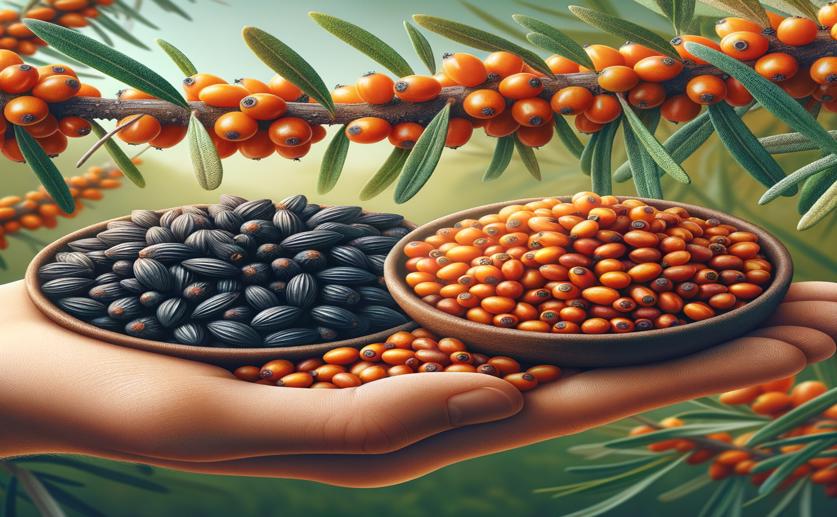
Health Benefits of Raw vs. Roasted Sea Buckthorn Seeds: Antioxidants and More
Greg Howard
12th September, 2024

Image Source: Natural Science News, 2024
Key Findings
- Researchers from the University of Lodz studied sea buckthorn seeds to identify compounds responsible for their health benefits
- Serotonin and B-type proanthocyanidins were found to be dominant in certain fractions, contributing to antioxidant properties
- Fraction g from roasted seeds showed the strongest antioxidant properties, mainly due to dihexoses and serotonin
References
Main Study
1) Comparative phytochemical, antioxidant, and hemostatic studies of fractions from raw and roasted sea buckthorn seeds in vitro.
Published 11th September, 2024
https://doi.org/10.1038/s41598-024-72012-y
Related Studies
2) Antioxidants and bioactivities of free, esterified and insoluble-bound phenolics from berry seed meals.
3) Specialized phenolic compounds in seeds: structures, functions, and regulations.
4) Selected Seeds as Sources of Bioactive Compounds with Diverse Biological Activities.



 15th August, 2024 | Jim Crocker
15th August, 2024 | Jim Crocker